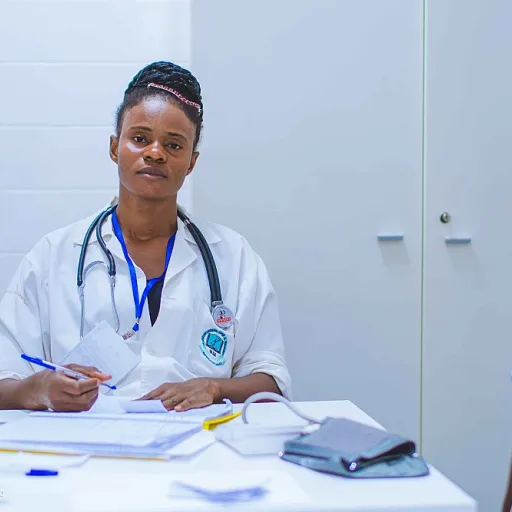
Understanding Placenta Encapsulation
The Fundamentals of Placenta Encapsulation
Placenta encapsulation, a practice rooted in traditional Chinese medicine, is an increasingly popular choice among birth professionals and new mothers alike. This process involves the preparation of the placenta, transforming it into consumable capsules postpartum. Utilized as a way to support recovery after childbirth, placenta encapsulation is more than just a trend; it’s a specialized practice that requires thorough training and understanding. At its core, placenta encapsulation involves a series of meticulous steps, beginning with safe handling of the placenta immediately after birth. This process is critical for maintaining the integrity and safety of the capsules for new mothers. As a placenta encapsulator, your role will be to handle, prepare, and transform the placenta with care, ensuring that each step meets professional standards. Placenta encapsulators often come from various backgrounds, including doulas, birth workers, and those with training in traditional Chinese medicine or other holistic practices. The interest in placenta encapsulation has led to the development of specialized training programs and services that offer modules on safe handling, preparation techniques, and certification for aspiring professionals. For those seeking continuous learning opportunities in specialized fields, becoming a certified placenta encapsulator combines both the science of safe preparation with the art of comprehensive postpartum care. The journey to mastering this niche involves understanding not only the preparation process but also the intricacies of starting a business that provides placenta encapsulation services. The required training includes modules on business planning, client interactions, and understanding the health regulations surrounding the practice. Such training ensures that placenta encapsulators are fully equipped to cater to their clients with the utmost professionalism and knowledge. For many birth professionals, the appeal of placenta encapsulation lies in its potential to enhance the post-birth recovery experience for mothers. As an encapsulation specialist, you may find yourself in a unique position to offer additional services, such as creating cord keepsakes or integrating placenta encapsulation into a broader suite of postpartum offerings. Continuous learning and professional development are essential to staying informed about evolving techniques and ensuring that your practice meets current standards. For those interested in expanding their expertise, understanding the journey to becoming an orthodontist exemplifies the dedication required for success in specialized fields, highlighting the importance of thorough training and certification.The Importance of Continuous Learning in Specialized Fields
The Role of Ongoing Education in Maternal Health Practices
Continuous learning is of paramount essence in specialized fields such as placenta encapsulation. With the rise of holistic health practices, understanding the comprehensive process of placenta preparation and encapsulation moves beyond initial training. Encapsulators are required to adapt and evolve throughout their career to ensure they provide the highest quality service to clients. Placenta encapsulation is intricate, blending components of health, safety, and traditional wisdom. Here, expertise doesn't just develop from completing a module or certification course but expands through regular coursework and staying attuned to new techniques and safety standards. Further, training includes aspects like safe handling procedures, bloodborne pathogens, and professional certification, encouraging a deeper grasp of the workings within this niche industry. For encapsulators keen on offering quality postpartum services, consistency in education aids in delivering dependable results. Also, knowledge of traditional Chinese medicine or methods of preparation like placenta encapsulation broadens the scope of services offered by birth professionals and birth workers. Consequently, it can bolster the business by enhancing interactions with clients and their specific postpartum needs. Regular learning opportunities such as advanced courses, workshops, and conferences are essential. They provide insights into the latest trends and research findings, which could affect practices. For instance, staying updated with the credit requirements in other educational contexts may offer a perspective on the importance of structured and continuous improvement in one’s skill set (high school graduation requirements). Add to this the integration of cultural insights, such as understanding the traditions around cord keepsakes, and you discover that professional development never stands still. It is a dynamic path where training incorporates the latest practices and establishes a benchmark for other encapsulators within the birthplace business. Furthermore, continuous training not only builds credibility but also maintains a trusted relationship with clients. It signals commitment to ongoing development and a dedication to upholding the highest professional standards in the field of placenta encapsulation.Steps to Begin Placenta Encapsulation Training
Initiating the Journey to Placenta Encapsulation Expertise
Embarking on the path to becoming a placenta encapsulation specialist involves several essential steps. As with any professional training, it's crucial to have a solid understanding of what's involved in encapsulation. The process entails the preparation of the placenta for postpartum services, transforming it into capsules that clients can consume. To ensure safety and effectiveness, prospective placenta encapsulators must undergo a comprehensive education.
Training includes modules on various aspects of this practice. These cover safe handling and sanitation techniques, crucial for minimizing the risks of bloodborne pathogens. Furthermore, the curriculum often delves into the benefits and history of placenta consumption, drawing knowledge from traditional Chinese medicine practices.
Those interested in furthering their expertise should start by enrolling in a certification program. Gaining certification not only enhances your credibility but also confirms your proficiency in providing placenta services. Programs typically feature instructional materials and hands-on training that span from initial consultation with clients to the final encapsulation service delivery. Emphasis on client communication and business management is also integral, as these skills are vital for birth professionals running their own encapsulation business.
For individuals eager to provide an expanded range of birth-related services, adding placenta training to existing skills such as doula or birthing support is an excellent option. If you're aiming to become a professional placenta encapsulator, you may find it beneficial to explore modern learning approaches, which can often be found in exploring online classes. Such classes provide flexibility and access to comprehensive learning modules for busy birth workers eager to start or elevate their practice.
Overall, the journey to mastering placenta encapsulation demands commitment and a continuous approach to learning, ensuring you stay informed about advancements and best practices in this evolving field.
Challenges in Placenta Encapsulation Training
Overcoming the Hurdles in Placenta Encapsulation Training
Embarking on the journey to become a certified placenta encapsulator is not without its challenges. As with any specialized field, placenta encapsulation training demands dedication and a willingness to navigate various obstacles. Here are some of the common challenges faced by aspiring practitioners:
- Understanding Complex Procedures: The process of placenta preparation involves several intricate steps, from safe handling to encapsulation. Each module in the training program is designed to ensure that encapsulators can perform these tasks with precision and care.
- Meeting Certification Requirements: Achieving encapsulation certification requires completing a comprehensive course that covers both theoretical knowledge and practical skills. This includes understanding bloodborne pathogens and traditional Chinese medicine principles, which are crucial for safe and effective practice.
- Balancing Training with Other Responsibilities: Many individuals pursuing placenta encapsulation are already involved in birth work, such as doulas or other birth professionals. Balancing training with existing commitments can be challenging, requiring effective time management and prioritization.
- Building a Client Base: Starting a placenta encapsulation business involves not only mastering the technical skills but also developing a strategy to attract and retain clients. This includes understanding the needs of postpartum clients and offering additional services like cord keepsakes.
- Keeping Up with Industry Trends: As the field evolves, staying informed about new techniques and trends is essential. Continuous learning and professional development are key to maintaining a competitive edge in the birth business.
Despite these challenges, the rewards of becoming a placenta encapsulation specialist are significant. With the right training and support, aspiring encapsulators can overcome these hurdles and build a successful career in this unique and fulfilling field.
Resources and Support for Aspiring Practitioners
Resources and Networks for Aspiring Placenta Encapsulation Professionals
Aspiring placenta encapsulators embarking on this unique journey have access to a wealth of resources and support systems that can facilitate their growth as professionals in this field. The path to mastering placenta encapsulation is marked by dedication, study, and the ability to adapt in an ever-evolving landscape. Here are some essential resources and support networks to consider:- Training Programs: To ensure competence in placenta preparation and safe handling, enrolling in a comprehensive encapsulation training course is vital. These modules often cover aspects such as bloodborne pathogens certification and traditional Chinese medicine principles.
- Certification Opportunities: Obtain certification through accredited organizations that provide standards and assessments necessary to validate your skills. Certification not only enhances credibility but also boosts client trust.
- Experienced Practitioners: Networking with experienced placenta encapsulators can offer valuable insights and guidance. Engaging with those who have successfully started their own birth business can equip you with practical advice on navigating challenges in the field.
- Birth Worker Communities: Joining birth professional organizations, such as doula training groups, can provide support and motivation. These communities often share updates on industry trends and methodologies.
- Postpartum Care Resources: To better serve your clients, tap into a variety of postpartum resources which can broaden your understanding of the challenges and needs new mothers face.
- Business Development Workshops: For those looking to combine placenta encapsulation with a business, attending workshops focused on growing services can prove invaluable. These often cover marketing, client relationships, and effective communication strategies.
Future Trends in Placenta Encapsulation
Emerging Trends in Placenta Encapsulation
As the field of placenta encapsulation continues to evolve, several trends are emerging that aspiring encapsulators should be aware of. These trends not only highlight the growing interest in this specialized area but also underscore the importance of continuous learning and adaptation.
Integration with Traditional Chinese Medicine
One significant trend is the integration of placenta encapsulation with traditional Chinese medicine practices. This approach emphasizes the holistic benefits of placenta preparation, aligning with ancient methods that have been used for centuries. Birth professionals and encapsulation specialists are increasingly incorporating these traditional techniques into their services, offering clients a more comprehensive postpartum experience.
Enhanced Training Programs
With the rise in demand for placenta encapsulation services, training programs are becoming more robust and specialized. Courses now often include modules on safe handling, bloodborne pathogens, and even business management to help new encapsulators start their own birth business. Certification programs are also expanding, providing aspiring practitioners with the credentials needed to establish credibility and trust with clients.
Focus on Safety and Standards
As the industry grows, there is a stronger focus on safety and standardization. Organizations are working to develop guidelines that ensure safe handling and preparation of placental materials. This is crucial for maintaining the health and safety of both the encapsulator and the client. Continuous learning in this area is vital, as new safety protocols and best practices are regularly introduced.
Personalized Client Services
Another trend is the move towards personalized services. Clients are seeking more tailored experiences, whether it’s through custom placenta encapsulation methods or additional offerings like cord keepsakes. Birth workers and doulas are expanding their services to meet these demands, often requiring additional training to enhance their skill set.
Technological Advancements
Finally, technology is playing a larger role in placenta encapsulation. From online training modules to digital platforms for client management, technology is making it easier for encapsulators to manage their business and stay updated with the latest industry developments. This digital shift is also facilitating better communication and support networks among professionals in the field.
In conclusion, the future of placenta encapsulation is bright, with numerous opportunities for growth and innovation. By staying informed about these trends and engaging in continuous learning, practitioners can ensure they remain at the forefront of this dynamic field.












